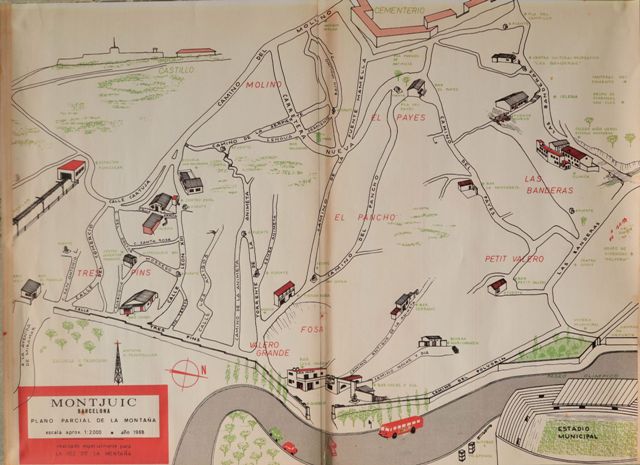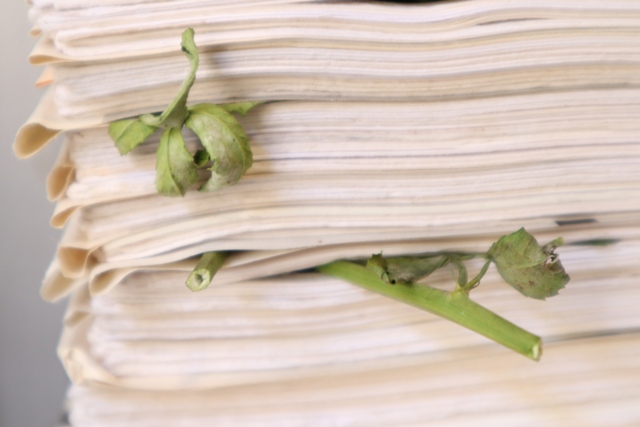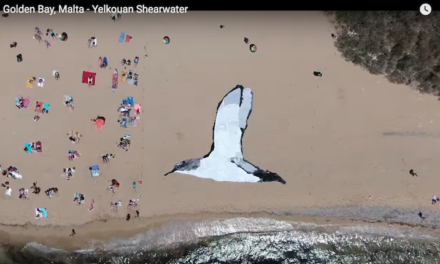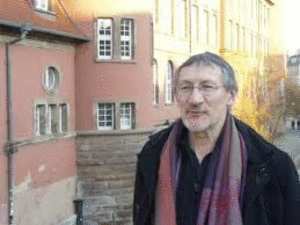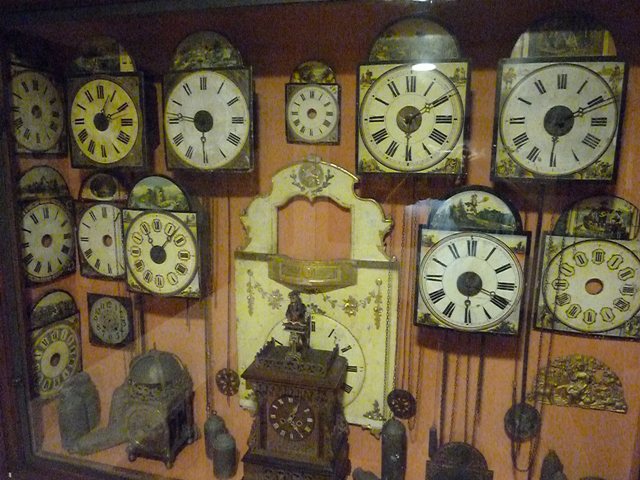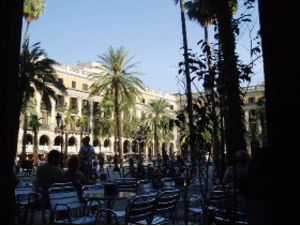BOTANIC GARDEN – NATURAL SCIENCE MUSEUMS OF BARCELONA
The El Solar Objects Detective Agency (Agencia de Detectives de Objetos El Solar), comprising Shaday Larios, Jomi Oligor and Xavier Bobés, took part in Barcelona’s summer arts festival Barcelona Grec Festival 2018 with a research project entitled ‘Fieldwork Notebook’ (‘Cuaderno de Campo’). This is the team’s second research-based piece, following ‘Debut Album’ (‘Primer Album’) on a carpenter’s shop in the centre of Girona for the Temporada Alta festival (see here). This latter project originated in a previous, first experience: ‘El Solar del Estraperlo’ set in Barcelona’s Raval neighbourhood, a project linked to the Figures of Doubleness exhibition and IF Festival of Barcelona.
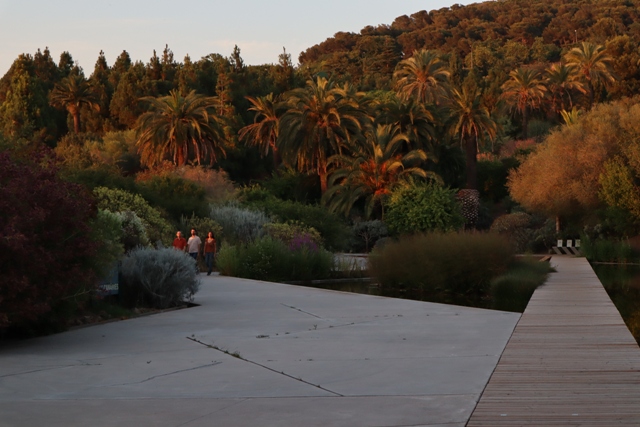 The three artists of El Solar cross the Botanic Garden to meet the audience group. Photo by Nino Milone.
The three artists of El Solar cross the Botanic Garden to meet the audience group. Photo by Nino Milone.
It would be impossible, unwise even, to try to classify this unusual work, situated on the frontiers between various arts and disciplines: halfway between theatre performance (it was shown in a theatre festival) and the field of learning and knowledge, and, for this chronicler, fully integrated into the field of plastic arts and taking wing, too, in that of poetry.
The starting point for the team’s research was the section of the hill of Montjuïc that is now occupied by the Botanical Garden and Natural Science Museum, a beautiful place located between the castle and the cemetery. The investigators undertook to reveal, layer by layer, various superimposed dimensions that form a landscape which, today, seems untouched in its setting as a modern, sophisticated botanical garden dedicated to the study and cultivation of plants from around the globe, but which, nevertheless, harbours deep layers of a reality possessing its own dramatic aspects. A reality composed of different strata that give eloquent expression to history, to the people who lived there, the geography of the place and to diverse elements of the current botanical context, without losing sight of the human dimension of the scientists working there.
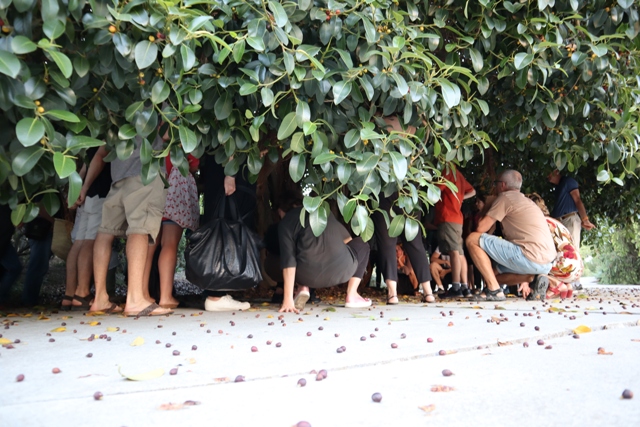 Spectators under the hundred year-old Ficus listen to stories of the tree and “other things”. Photo by Nino Milone.
Spectators under the hundred year-old Ficus listen to stories of the tree and “other things”. Photo by Nino Milone.
One of their missions has been to search for and reveal these hidden layers so as to make them perceptible to the public who participated in the event in a small group guided by the three artists themselves. They began by indicationg and explaining the layers of reality that form the landscape: the trees and plants grouped according to their origin – Australia on one side, South Africa on the other, California further back, Mediterranean flowers in this corner, then trees from the Americas, and so on. But as we discover the complexity and wealth of the surrounding vegetation, and listen to a comparison with human migrations, we begin to glimpse another reality beneath the ground we are walking on: fragments that hold memories of a population of more than thirty thousand souls who inhabited this shoulder of Montjuic, migratory waves of people from the south of Spain who came to Barcelona after the Civil War, and who gradually installed themselves in this place until it became one of the city’s most important and bustling neighbourhoods of shacks.
I suddenly become aware, from murmurs and comments from some of those present, that among the public on this particular day are a number of ex-inhabitants of the old neighbourhood; they collaborated with the researchers and have come to see the result. People of my age and, like me, from Barcelona; they spent their youth in this out-of-the-way place and are following, astonished and with their heart in their mouths, the route along which the members of the Solar are leading us.
The sedimented, stratified reality of numerous generations’ lifetimes, historic periods and stories begins to dissolve, little by little, so that separate and contrasting levels are revealed, allowing a natural drama of contrasts to emerge; indeed, the drama springs un-coaxed from the opposing layers of time, gently picked apart.
The great thing is that this unravelling of reality is minutely and concisely carried out, presented simply, in an almost minimalist fashion, with impressionistic brushstrokes each of which is like the revealing of an onion layer of this world in which we find ourselves. And, little by little, we begin to see reality through these layers that act like different lenses, superimposed but distinguishable, over our eyes. However, the magical and definitive moment –which draws together all our impressions and combines them in a cathartic process we could call ‘poetic theatre’– arrives when we reach the Natural Science Museum; the audience is asked to sit on small steps in front of a large window overlooking the garden, with the city in the background and the surrounding hills in the distance. It is as if the landscape encapsulates what we have seen as it gradually grows dark, for time has slowly passed and night takes possession of the space.
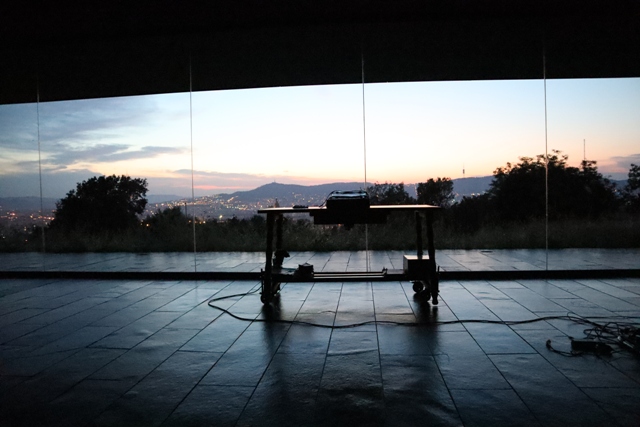 Landscape from the esplanade. Photo by Nino Milone.
Landscape from the esplanade. Photo by Nino Milone.
The outer experience, then, becomes the inner. And, all of a sudden, following information about the museum and the people who work there, as well as various details about the funds kept in its reserves, worthy of the most original not to say esoteric Cabinet of Curiosities (one of which, belonging to the eighteenth century chemist, Farmacia Salvador, is just behind us), time and space contract in a magical moment where words cease: in dim light, with music like the breath of a soul, the intersection of the different realities we have been shown merge into pure poetic experience.
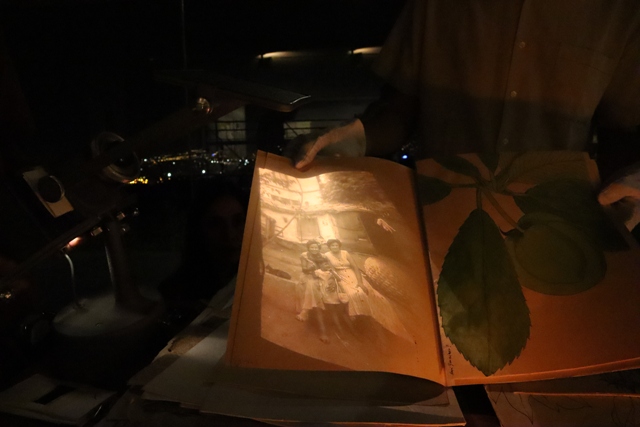 Intersection. Photo by Nino Milone.
Intersection. Photo by Nino Milone.
Historic periods overlay each other, the landscapes and memories, images now only in black and white, distant time and a single lifetime, and something that lies beyond words and concepts emerges from the hands of the performer who manipulates time and planes, from the profuse layers that make up our reality, distinguishable but superimposed, creating a glow of emotion that has to do with the awareness of Time and of times, which is as far as we humans can go.
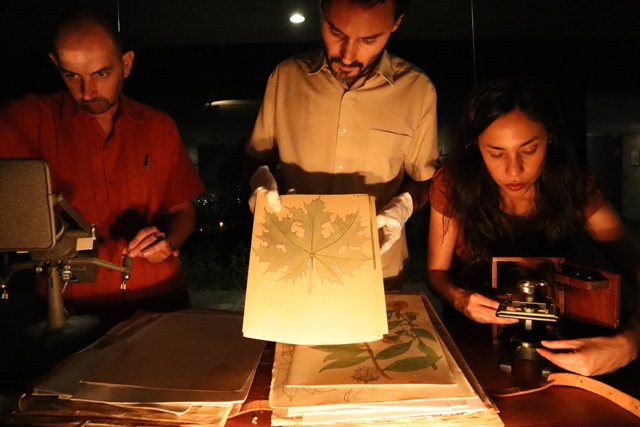 Intersection. Photo by Nino Milone.
Intersection. Photo by Nino Milone.
With the catharsis ended, a silence descends which no applause dares to break. The three researchers of the Solar invite the audience to add their thoughts, and those who had lived on the Mountain when they were young can scarcely express their deep emotion, which has to do with memory and nostalgia, but also with the flavour of acquired knowledge, of the perspective offered by distance, which illuminates, relaxes and elevates.
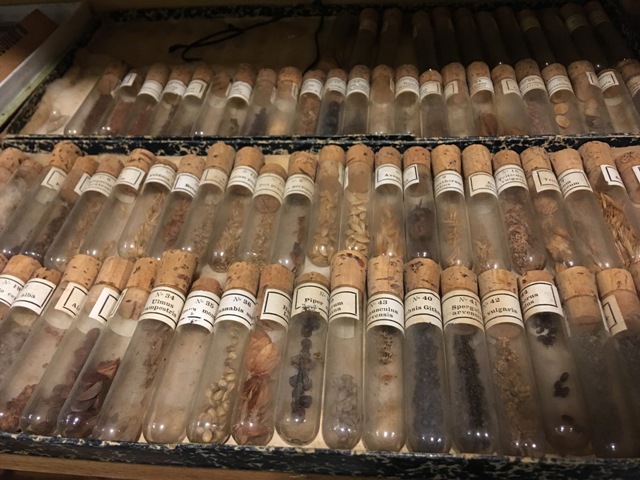 Tubes in classification boxes from the Museum. Photo by Nino Milone.
Tubes in classification boxes from the Museum. Photo by Nino Milone.
Finally, applause breaks the spell and the public are invited to visit an exhibition of photographs, publications –such as the Voice of the Mountain–, maps and the other few but eloquent testimonials that have survived from that human population that was swept away by a change of epoch, progress and modernity. The artists told us that the City Council, on learning about the experience and seeing the results, have shown an interest in collecting the documentation and putting it on display in a permanent exhibition. Let’s hope the idea prospers.
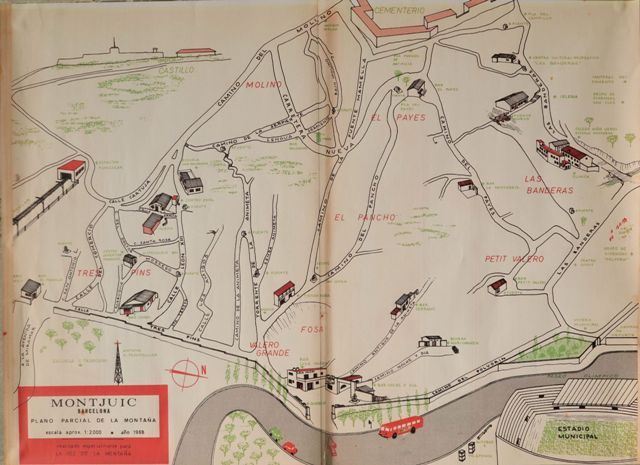 Map of the village made by the barraquistas and published in the magazine ‘La Voz de la Montaña’ (the voice of the Mountain) in 1968. Photo by Nino Milone.
Map of the village made by the barraquistas and published in the magazine ‘La Voz de la Montaña’ (the voice of the Mountain) in 1968. Photo by Nino Milone.
There can be no doubt that we find ourselves before a new type of theatre, as developed by the three artists of El Solar, who combine a profound reflection on objects and their poetic and documentary resonances with anthropology, history, geology, botanics, philosophy and so on. Theatre of the future, perhaps, capable of combining a show’s catharsis with the self-knowledge offered by the observer’s distance, together with a refined sensitivity capable of opening additional doors to perception. All these are addressed by, and communicated through this exquisite piece of work that the company El Solar has embroidered with an unusual degree of skill in this second instalment of their detective agency.
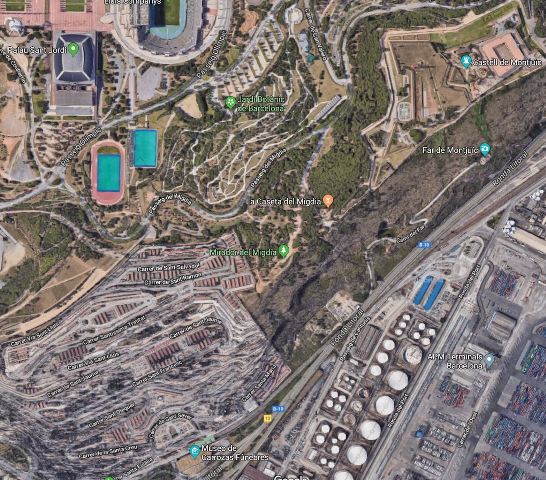 Aerial view of the Botanic Garden situated between the Olympic stadium, the Castle of Montjuic and the Cemetry of Montjuic. Satelite photo, Google Earth 2018.
Aerial view of the Botanic Garden situated between the Olympic stadium, the Castle of Montjuic and the Cemetry of Montjuic. Satelite photo, Google Earth 2018.

